The Art of Life: Local Experience 360 Degrees
Dive into Thailand’s many hidden gems in Chiang Rai
A vibrant and alluring destination, Chiang Rai surely is a promising destination that should be on the radar for locals, expats and visitors alike.
Founded in the year 1262 as the capital of the Mengrai Dynasty, today the city retains a strong Lanna identity through its impressive collection of temples, art, language, unique cuisine and music.
Bangkok 101 joined the initiative by Tourism Authority of Thailand (TAT) called the ‘Local Experience 360 Degrees: Art of Life’ where we enjoyed a three-day off-the-beaten-path excursion in Chiang Rai.
The Coffee Village, Doi Pha Hee
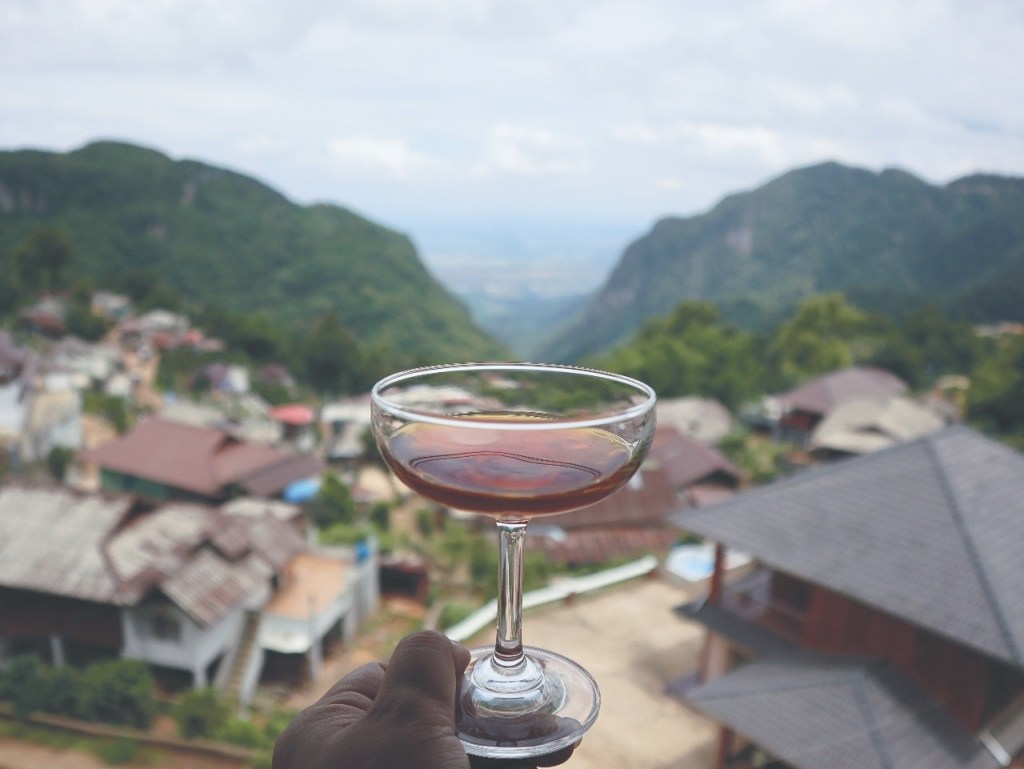

Our journey began at a small village located in Mae Sai District, Chiang Rai province, where the people of the Akha tribe reside.
The Queen Mother and the late King Rama IX convinced the tribespeople that growing and selling coffee would bring in more consistent income all year round. Today, the community has over 12 coffee shops and 15 homestays that are personally operated by the locals.
Doi Pha Hee received its fame for the breathtaking natural scenery and, of course, coffee. Visitors flock to the location especially in January to bask in the glory of the Himalayan Cherry blossoms.
We enjoyed a coffee-making workshop led by the village’s leader and owner of Pha Hee Coffee shop before taking a tour of the town afterwards.
Baan Sang Kong Handmade Arts & Crafts
We entered the community centre of Baan Sang Kong, where the kind and courteous host ladies greeted us with a warm welcome.
Different stations showcased a variety of handmade arts and crafts items, from handmade decorative flowers to local food dishes and desserts, to embroidery pieces.
We sat down in different stations to try our hands’ in some arts and crafts ourselves. We began with a hand-fold beautiful rose made using fresh pandan leaves. It turned out to be much harder to master than it seems, but we all managed (with help from the ladies, of course).
Next, we upgraded to try and create intricate hand embroidered items. They also hold monthly workshops at Chiang Rai
Central Prison to teach the prisoners as part of a rehabilitation programme. The pieces are shipped and sold at various stores throughout the province.
I was lucky enough to receive a personal and private tour of the surrounding gardens where beautiful trees and herbs grow. The owners are two sisters who inherited the 16-rai land from their parents. They later converted an area into a community centre while they produce a variety of fruit-bearing-or medicinal-trees in the remaining property.
Weaving and bobbing through the small footpath, she pointed out various trees and vegetations and explained about the food or medicinal benefits they offer.
Back at the community centre, we tasted some very robust and spicy rice noodle soup or Kanom Jeen. We also tried the powerful and sharp homemade fermented Butterfly Peas whisky and fried doughnuts to replenish our energy before moving on to the next adventure.
Wat Rong Khun (The White Temple)
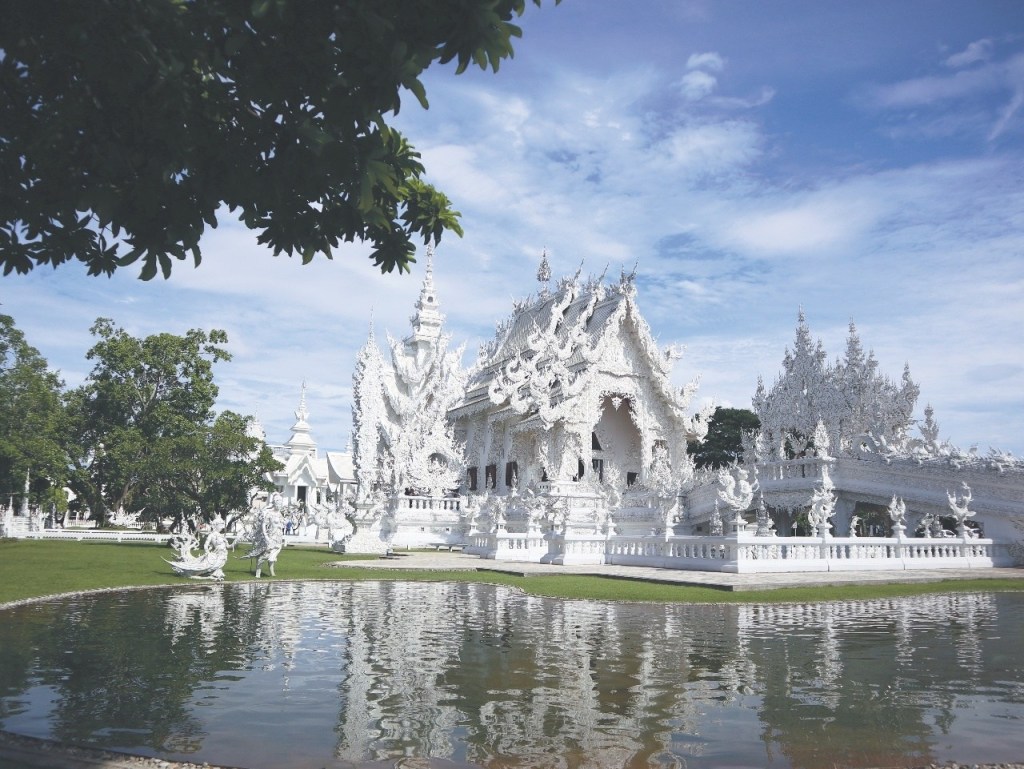

It is hard to visit Chiang Rai and not make a stop at the famous White Temple. The temple started receiving visitors in 1997 and is probably one of the most known amongst visitors to Thailand’s northern provinces. On 5 May 2014, it suffered damages from the 6.3 Richter earthquake, but it has recovered its previous glory through renovation.
The original Wat Rong Khun has fallen into a bad state by the end of the 20th century, and there was no hope of renovation. The famous visual artist, Ajarn Chalermchai Kositpipat, decided to rebuild the temple with his funds as an offering to Lord Buddha. It is stated that he spent over B1,080 million into the project.
The contemporary and unconventional temple exhibits a Buddhist temple style while boasting many exciting details.
The admission to the temple is free for Thai nationals and costs B50 for foreigners.
Wiang Ka Long Ceramics
Weaving through small lanes and alleys, we finally arrived at the front gates of the famed creator and only producer of the famous Wiang Ka Long ceramics in Thailand.
Greeted by Kru Tan Thijittang, we learned the history of how the art of Wiang Ka Long ceramics came to be. It began with pure personal curiosity. He started researching the one-thousand-year-old ceramic art process and exploring the methods to recreate the pieces. Through decades of trial and error, he finally perfected the ancient creation process and became well-known as the creator and producer of today’s highly valued Wiang Ka Long ceramics in Thailand.
From historical research, the area used to be the base of a volcano. The soil still retains abundant volcanic minerals. Once processed and made into ceramics, the results are porous and lightweight items that are also sturdy and strong. It is also believed that the minerals in the soil will offer health benefits to those who use them.
The uniqueness of Wiang Ka Long ceramics is in the light and natural soil colour obtained after processing. The tones produced are navy blue and reddish-brown. The decorations include intriguing patterns that exist nowhere else generally portraying legends and teachings of Buddhism helps elevate the items to international popularity.
Wat Rong Suer Ten (The Blue Temple)
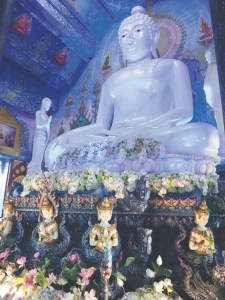

Located in Rimkok District just outside of Chiang Rai, this is a grand result by a student of Ajarn Chalermchai Kositpipat whose White Temple attracts people from all over.
The contemporary and creative temple shines a specific shade of blue. While the main temple is open to the public, some areas are still under construction. It has become another attractive location to visit in Chiang Rai.
Inside the temple features wall paintings and bas reliefs that resemble those of Wat Rong Khun. Inside the main temple stands a great marble-white sitting Buddha surrounded by exquisitely detailed angels on the lotus base.
We’d recommend the best time to visit is in the morning hours before noon because the temple faces the East and would receive the best light then.
The Blue Temple is not as well known to visitors. However, we are confident it will become one of the staple locations for those who visit Chiang Rai very soon.
There is no public transport that will take travellers to the temple, but one can hire a van or tuk-tuk to get there.
Admission is free, and visitors can take pictures inside the main temple’s hall.
Art of tea at Choui Fong Farm
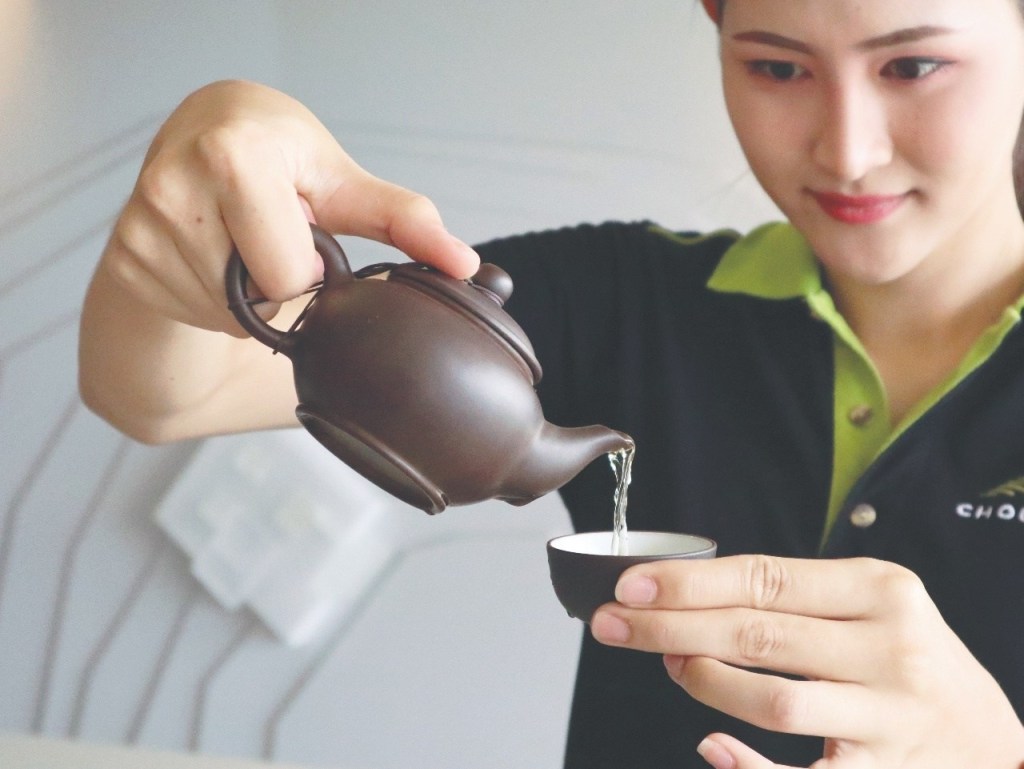

Today we started with morning tea at Choui Fong tea plantation. It sits about 40 kilometres from Chiang Rai, and it is one of the best known and most extensive tea plantations in the province.
The areas are separated into three sectors while the one we went to is most visited since it has a gorgeous view of the mountains over the fields.
Choui Fong tea plantation offers daily tea workshop for all visitors. The educational information revolves around tea-making processes and different types of tea available at the farm.
Visitors can also enjoy a little bit of shopping in the store and order the Choui Fong tea and desserts from the café to sit and enjoy while drinking in the view.
Choui Fong tea plantation opens daily from 8:30am-5:30pm. The entry is free. The best time to visit is early in the morning when it’s not too hot, and there will also be lesser visitors and plenty of selfie opportunities.
Baan Dam Museum
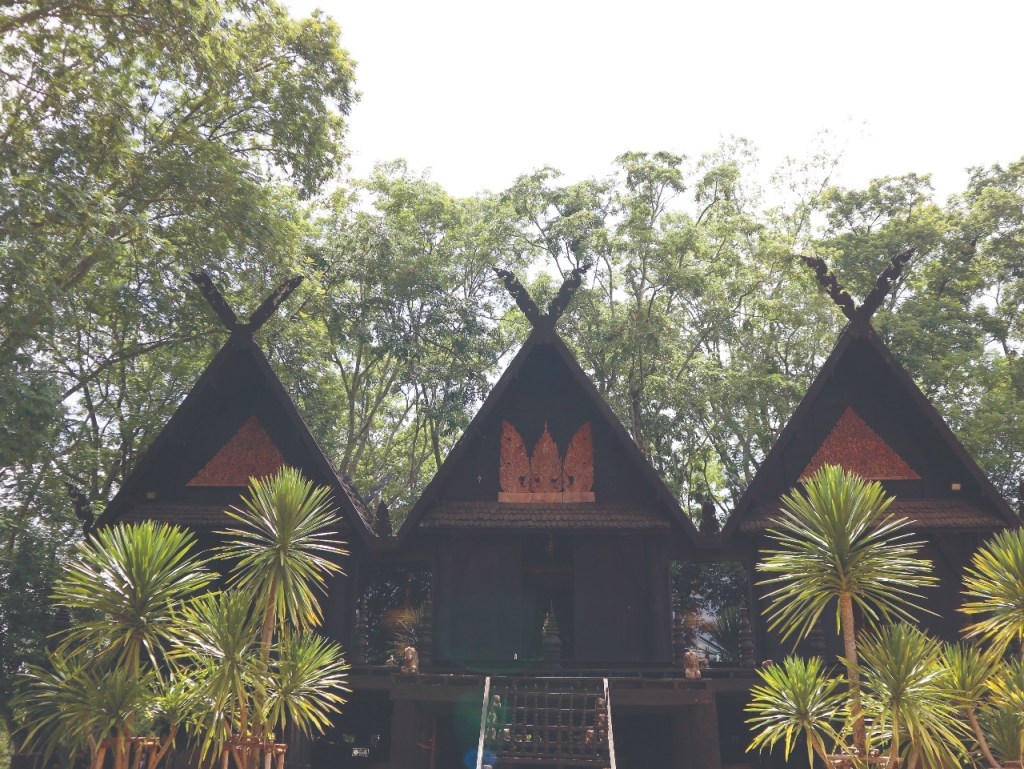

Next destination was the Baan Dam Museum (meaning ‘black house’), located only a few minutes by car from Chiang Rai city. The museum belonged to the family of now-deceased national artist, Thawan Duchanee.
The namesake came from the artist’s idea to preserve and protect the wood while focusing on using his favourite black colour. He mixed a concoction of motor oil and other products to paint the houses to protect the wood from the elements while also rendering the matte black shade he so loved.
He obtained the land over 50 years ago and began adding different buildings to the compound. Some buildings function as art galleries or exhibition halls. Some are for storage. Some worked as his art studio and accommodation where he would lock himself in for days at a time while working on his many projects.
The compound comprises of over 40 buildings of different shapes and sizes. The buildings are of unique mixes between traditional northern Thai architecture style with some very outlandish modern designs.
The main house commands the most attention as it is one of the largest and closest to the road. Entering the main hall, we were greeted by a grand display of art pieces and collections, all very impressive in details and sizes. Large portions of handmade furniture lined the main gallery. These items are designed and made by the artist using the collection of wood and buffalo horns he collected.
The museum opens daily 9am-5pm, closes for lunch 12pm-1pm and the entry fee is B80 per person.
Khua Silapa Gallery
Our final stop for this beautiful trip concludes at the modern Art Bridge Chiang Rai (ABCR) or locally known as ‘Khua Silapa’.
The building houses gallery spaces, a souvenir shop and a coffee shop. The gallery was created to offer exhibition spaces for local artists to showcase their work no matter where they are in their career path.
The art exhibitions rotate monthly. This is to provide an essential platform for local artists to find much-needed exposure while giving visitors an artistic and cultural showcase location.
Special Thanks:
• Tourism Authority of Thailand (TAT)
• Ookbee U Co., Ltd.
• Thai Smile Airways
• The Riverie by Kata Thani Resort, Chiang Rai
• De Lanna Riverfront restaurant
• Jan Chay Thai restaurant
• Salungkham restaurant
• Doimok Dokmai restaurant











Leave a Reply